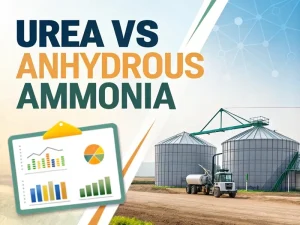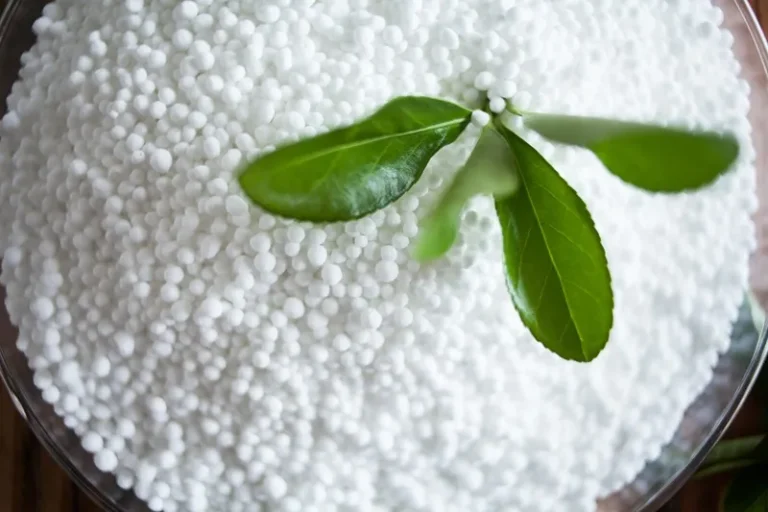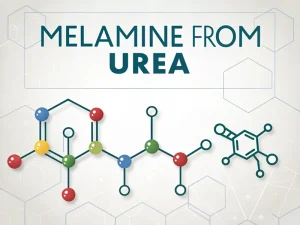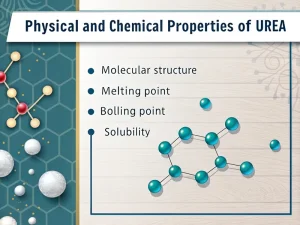
Urea VS Anhydrous Ammonia
Tech Blog urea vs anhydrous ammonia Nitrogen is the “lifeline” of crop growth, directly affecting leaf development, photosynthetic efficiency, and yield potential. For global farmers,


Urea(CH₄N₂O) a compound closely related to agriculture, industry, and medicine, often raises questions about its flammability. In theory, oxidation reactions can occur, but they are nonflammable at room temperature and pressure and require specific conditions for combustion.
Urea melts at 133 ° C and decomposes above 150 ° C, releasing ammonia (NH3) instead of igniting:
This decomposition pathway prioritizes thermal decomposition over combustion, making it difficult for urea itself to ignite.
The main conditions for urea combustion are high temperature and humid environment. When urea is stimulated (such as high temperature, friction, oxygen in the air, etc.), the decomposition reaction of urea will start, which can generate heat and release gases such as carbon dioxide and ammonia. When urea is in a humid environment, it absorbs moisture to form a solid, which contains high concentrations of ammonia and is also prone to fire.
The possibility of dust explosion
Combustible dust: Under specific conditions, fine urea dust can form explosive mixtures with air.
Minimum explosive concentration (MEC):~1000 g/m ³ (significantly higher than common flammable dust such as flour, with an MEC of 60 g/m ³).
Ignition temperature: Urea dust requires an ignition source of approximately 400 ° C, which is a temperature rarely encountered in typical industrial environments.
Real-world risks: Although theoretically possible, urea dust explosions are extremely rare due to high MEC and ignition temperature limitations that limit actual hazardous situations.
Combustion in an oxygen-rich environment
Extreme conditions: Urea can be burned in pure oxygen or highly oxidizing environments, but this is not relevant for most industrial and agricultural uses.
Laboratory observation: Under controlled conditions, urea may burn and produce yellow flames, producing nitrogen, carbon dioxide, and water, but this situation is not encountered during normal operation.
Combustion equation (high temperature or pure oxygen environment):
Complete combustion: 2CO (NH ₂) ₂+3O ₂ → 2CO ₂+4H ₂ O+2N ₂
Incomplete combustion: 2CO (NH ₂) ₂+7O ₂ → 2CO ₂+4H ₂ O+4NO ₂
| Substance | Flash Point | Ignition Temperature | Explosive Range (in air) |
|---|---|---|---|
| Urea (solid) | Not applicable (decomposes) | ~400°C | 1000 g/m³ (dust) |
| Gasoline | -40°C | 257°C | 1.4–7.6% |
| Ethanol | 13°C | 365°C | 3.3–19% |
| Wood dust | Not applicable | 210–250°C | 40–60 g/m³ |
Compared with typical flammable liquids and combustible dust, urea lacks flash point and high ignition temperature and belongs to the low flammability category.
Storage method: When storing urea, it should be placed in a dry, ventilated place away from direct sunlight. Moisture-absorbing agents can be placed around the area to ensure its dryness and prevent spontaneous combustion in humid environments.
Transportation method: During the transportation of urea, attention should be paid to avoiding friction and vibration between urea and other items to reduce the risk of decomposition reactions.
Usage: When using urea, pay attention to diluting it with water, controlling the temperature, and preventing urea from being exposed to high-temperature environments.
Vacuum packaging: Urea can be stored using vacuum packaging to avoid contact with air, delay decomposition reactions, and reduce the risk of spontaneous combustion.
Urea is best described as nonflammable under normal conditions, and its main danger lies in thermal decomposition rather than combustion. Although fine urea dust theoretically has a lower risk of explosion and urea can burn in extremely oxygen-rich environments, these situations are rare in practical applications. The high decomposition temperature, absence of flammable vapors, and low dust explosiveness of this compound classify it as low fire risk.

Tech Blog urea vs anhydrous ammonia Nitrogen is the “lifeline” of crop growth, directly affecting leaf development, photosynthetic efficiency, and yield potential. For global farmers,

Tech Blog melamine from urea Melamine is well-known for its wide range of applications, but its raw material for production is surprisingly urea. For manufacturers,

Tech Blog physical and chemical properties of urea Urea, with the chemical formula CO(NH2)2, is a simple organic compound that plays a central role in

JINGJIANG MELAMINE POWDER
© JINJIANG MELAMINE